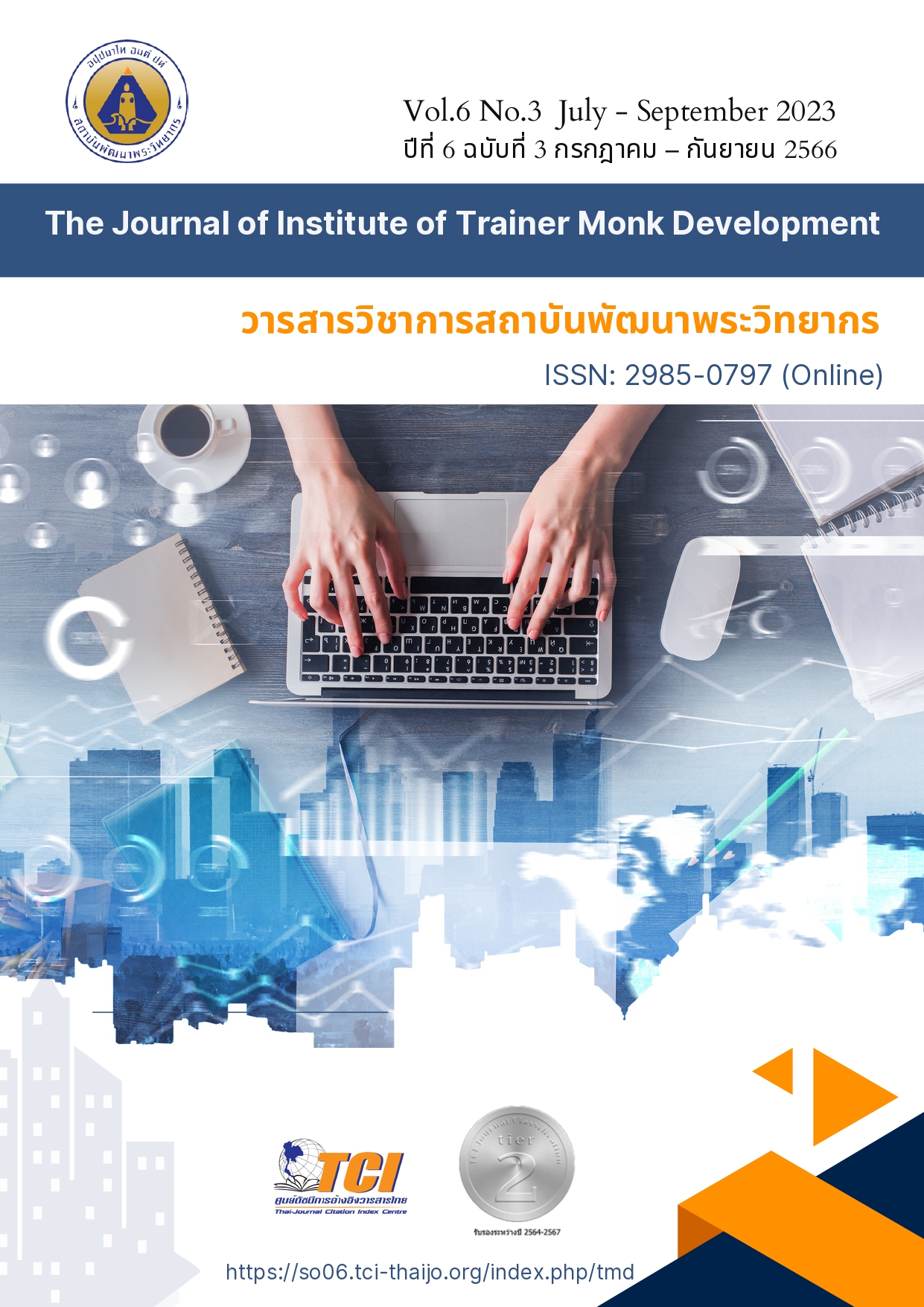The Development of Mathematics Problem Solving Skill Using Polya Techniques and Bar Model for Sixth Grade Students
Main Article Content
Abstract
The objectives of this research were: 1) to improve lesson plans for the development of problem-solving ability in Mathematics proposition, 2) to compare the learning achievement in Mathematics, 3) to compare the progress toward problem-solving ability in Mathematics proposition, and 4) to survey students’ stratification of development of problem-solving ability in Mathematics proposition by using Polya's problem-solving process, bar model technique of the sixth-grade students. The sample consisted of 35 sixth-grade students at Bandontamlueng School who obtained from purposive sampling, in the second semester of the academic year 2022. This research was pre-experimental research using a one-group pretest-posttest design.
The results of the study revealed that: 1) Lesson plans in the development of problem-solving ability in Mathematics proposition by using Polya's problem-solving process, bar model technique of the sixth-grade students were significantly higher than the criterion (81.69/79.14), 2) Mathematics learning achievement of the sixth-grade students after studying through Polya's problem-solving process with the Bar model was higher at the level of 0.05, 3) Problem-solving ability in Mathematics of the sixth-grade students through Polya's problem-solving process, bar model technique was significantly higher than the criterion (70%), and 4) Students’ stratification toward the development of problem-solving ability in Mathematics proposition by using Polya's problem-solving process, bar model technique; 3 aspects included was at a high level.
Article Details

This work is licensed under a Creative Commons Attribution-NonCommercial-NoDerivatives 4.0 International License.
บทความที่ได้รับการตีพิมพ์เป็นลิขสิทธิ์ของวารสารวิชาการสถาบันพัฒนาพระวิทยากร
ข้อความที่ปรากฎอยู่ในบทความที่ได้รับการตีพิมพ์ในวารสาร ถือเป็นความรับผิดชอบของผู้เขียนบทความ และข้อคิดเห็นนั้นไม่ถือว่าเป็นทัศนะและความรับผิดชอบของกองบรรณาธิการวารสารวิชาการสถาบันพัฒนาพระวิทยากร
References
กรองทอง ไคริรี. (2554). แบบฝึกการแก้โจทย์ปัญหาคณิตศาสตร์โดยใช้บาร์โมเดล ชั้นประถมศึกษาปีที่ 4. กรุงเทพมหานคร: เอทีมบิสซิเนส.
ฉัตรกาญจน์ ธานีพูน และนงลักษณ์ วิริยะพงษ์. (2563). การพัฒนาความสามารถในการแก้โจทย์ปัญหาเลขคณิตของนักเรียนชั้นประถมศึกษาปีที่ 3 โดยใช้กระบวนการแก้ปัญหาของโพลยาร่วมกับบาร์โมเดล. วารสารมนุษยศาสตร์และสังคมศาสตร์ มหาวิทยาลัยราชภัฏสุรินทร์, 22(1): 93-105.
บุณฑริกา พงศ์ศิริวรรณ. (2552). การพัฒนาทักษะในการแก้โจทย์ปัญหาคณิตศาสตร์ ของนักเรียนชั้นประถมศึกษาปีที่ 4 โดยใช้เทคนิค เค ดับเบิ้ลยู ดี แอล. มหาวิทยาลัยเชียงใหม่: ม.ป.ท.
พรพรรษา เชื้อวีระชน. (2553). การพัฒนาแบบฝึกทักษะวิชาคณิตศาสตร์ เรื่องโจทย์ปัญหาเศษส่วน สำหรับ นักเรียนชั้นมัธยมศึกษาปีที่ 1. วิทยานิพนธ์ปริญญาศึกษาศาสตรมหาบัณฑิต. สาขาวิจัยและประเมินผล. บัณฑิตวิทยาลัย: มหาวิทยาลัยนเรศวร.
ฟารีดา นาคสง่า. (2561). การพัฒนาผลสัมฤทธิ์ทางการเรียน และความสามารถในการแก้โจทย์ปัญหาคณิตศาสตร์ เรื่องเศษส่วน ของนักเรียนชั้นประถมศึกษาปีที่ 6 โดยการจัดการเรียนรู้ แบบสืบเสาะหาความรู้7E ร่วมกับเทคนิคบาร์โมเดล. วิทยานิพนธ์ปริญญาครุศาสตรมหาบัณฑิต. สาขาวิชาหลักสูตรและการสอน. มหาวิทยาลัยราชภัฏสงขลา.
สถาบันทดสอบทางการศึกษาแห่งชาติ. (2564). สทศ. NIETS สถาบันทดสอบทางการศึกษาแห่งชาติ. สืบค้นเมื่อวันที่ 31 มีนาคม 2564 จากhttp://www.newonetresult.niets.or.th/AnnouncementWeb/MainSch/MainSch.aspx
สำนักงานคณะกรรมการการศึกษาแห่งชาติ. (2562). พระราชบัญญัติการศึกษาแห่งชาติ พ.ศ. 2542 และแก้ไขเพิ่มเติม (ฉบับที่ 4) พ.ศ. 2562. กรุงเทพมหานคร: สำนักนายกรัฐมนตรี.
Branca. (1980). Problem Solving as a Goal, Process, and Basic Skill. Reston: Yearbook.


